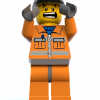-
Content Count
301 -
Joined
-
Last visited
About ALCO

Spam Prevention
-
What is favorite LEGO theme? (we need this info to prevent spam)
Trains
-
Which LEGO set did you recently purchase or build?
Crocodile
Contact Methods
-
Website URL
https://www.bricktraindepot.com/
Profile Information
-
Gender
Not Telling
-
Location
Where ever my pants are...
-
Interests
Trains, Realistic train MOC's, railroad landscapes
Extra
-
Country
United States
-
Okbrickworks sells replacement decals for most train sets. Reach out to Andy about what you need.
-
What number size is that? I know they are working on getting the different sizes in an LDraw file but I don't think they are quite finished with tr hat project yet.
-
Oh! Thank you! I will have to play with this!
-
Speed vs power settings? What is this new devilry?
-
@Daedalus304 Your whole post is very well said. To answer to OP: I use my r40's for display track in my glass cabinets. I also do not have a permanent layout nor do I currently do shows so when I want to run a train I throw some track down on the floor. If I want to run one of my 1:48 scale models that has 3rd party parts, then I use my r104+. But if I'm running a couple official set trains with my little boys, then r40's will do just fine. I am building a proper yard ladder by modifying r40 switches so there will be r40's there as well. But the A/D track with be accessed from the main via r104. In short my road power will not have to worry about r104 and my switching power will handle r40 with ease.
-

Straight tracks closer together than eight stud gap?
ALCO replied to Tube Map Central's topic in LEGO Train Tech
You can get half-straights from BrickTracks or HA Bricks for those in Europe. Or 2 flex track. -

Big Ben Bricks Injection Molded Steam Driver Wheels with Traction Bands Review
ALCO replied to ALCO's topic in LEGO Train Tech
@CMF-1138 great questions! I do not currently have a set of wheels without traction bands available to test with. Though, this should be easily remedied by removing the bands and redoing my tests. I will do this to give a better comparison. @ScotNick great questions! I will get the weight of each car and add that info to the OP. I can tell you that all three are equipped with roller bearings and are quite heavy as can be observed in the video as they keep rolling when my tested stops suddenly.- 8 replies
-
- naoltc
- steam driver wheels
-
(and 2 more)
Tagged with:
-

Big Ben Bricks Injection Molded Steam Driver Wheels with Traction Bands Review
ALCO posted a topic in LEGO Train Tech
Hello all, I am here with NAOLTC (North American Online Lego Train Club) to provide a review of Big Ben Bricks #11 size steam driver wheels WITH traction band grooves. These would be XL size under the old name scheme. Being size 11, this means these wheels are 11.5 plates in diameter measured on the rolling surface. Here is a size chart for comparison. This review is on-going in that I have already done some testing and playing with these wheels but as I sit here writing the review, new and different tests, views, needs for photos are occurring to me so I will be updating this review as time permits. Please check back for updates. Below is the current wheel size chart. Ben has had #11 wheels available for quite some time now and only recently has added traction band grooves. He asked me to provide a review on these wheels and so here goes: 1. Look and Feel These wheels arrived in a pack of 8. 4 flanged drivers and 4 blind drivers. This will allow for a steam locomotive wheel arrangement of x-8-x. They arrived with the traction bands already in place. Here are the wheels with the bands and without. As you can see, these are injection molded and have a superior finish to 3d printed wheels. On the back, you can hardly tell where the injection points are located. These wheels do not quite have the same glossy shine as the #9 wheels produced by LEGO®. (See size chart for reference) The photo below has the BBB #11 on the left and the LEGO(R) #9 on the right. 2. Pin and Axle Fit The pin fit is perfect. I tested this with different types of pins and they all easily snap in with a good little click. There is no lateral movement meaning the pins do not slide around but are secure yet have complete freedom for rotation. The axle holes also have just the right amount of friction to rival that of LEGO® equivalent connections. The tolerances on all eight wheels are very precise. 3. Traction Band Grooves The new great feature of this product is the size of wheel with traction band grooves. These appear to be built in the mold, so there is no evidence these were machined into he wheels after coming out of the mold. The grooves are pronounced enough to snugly hold a traction band, allowing just enough of the band to be exposed on the rolling surface to give the wheel traction, but not so much so as to raise the wheel off the rail head by a noticeable amount. I noticed that even the blind driver wheels have the traction band groove. At first I was confused by this, but I have come to realize that by putting traction bands on blind drivers, one could power an axle of blind drivers and still run your locomotive. (As of this writing, this is un-tested but I plan to add this to my future testing. Check again for updates) 4. The “Brumm” Test The name of this test comes from the sound one makes with their voice as they push a toy car along in play. So I quickly threw together a little frame and with make-shift side-rods to test “brumming” these wheels along the track with my hand. As I expected in the F-B-B-F arrangement r40 curves were no good. The flanges rubbed on the rails very hard and caused too much friction. Also, since the conical shape of the rolling surface is too fine to really be of any use in properly negotiating a curve of such proportions it really does not make sense to measure this. The traction bands on both sides of my frame also contributed to the additional friction but it was mostly the wheel flanges. This is the conclusion that I came to because when I changed the wheel arrangement to x-6-x or F-B-F I had no issues with r40 curves. You can see this in the powered test video in section 5 The Powered Tests. in my push test I did notice that the inside of the wheels seemed to get caught on the frame of my “locomotive” in the video below, you can see how I am attempting to push the locomotive along but the wheels are getting caught and causing it to stick. After closer inspection it appears that some of the injection points are ever so slightly rough enough to get caught on the technic brick frame. This did not seem to be a noticeable issue in my powered tests in section 5. Video of Brumm Test I removed the wheels to try to see what was causing the sticking and my only conclusion is that one of the injection points on one of the wheels was causing this. When I put some sideways pressure on the opposite side, the sticking sensation seemed to vanish. So this must be a one-off on one of the wheels. It is nothing a little sandpaper cannot fix though. 5. The Powered Test This is the test I was most excited for. I could not wait to throw down some track and get some cars out. I made a quick point-to-point layout so I could do some testing in both directions and through some BrickTracks r104 switches. I was very impressed with the grip this wheels and traction bands offer. While only using three cars, I feel this is a pretty good test. I’m not a PoweredUp expert so when I connected my hub to hand-held it somehow got set on all-or-nothing so my locomotive is quite jerky. I think this is actually creates a more difficult testing environment because of the sudden movements. On a model this situation might only happen if an emergency stop button were used….which would certainly cause the train to jack-knife. Anyway, great grip, really good stopping and starting. Check out the videos below. Video of Powered Test in x-8-x wheel arrangement Wheels are F-B-B-F Video of Powered Test in x-6-x wheel arrangement Wheels are F-B-F 6. (Intentionally left blank) Conclusion. I still have some more tests to run and I would like to get some more and better photos which I will add to the OP as time permits. But so far I have to say that I am really excited for these wheels and they will be very useful. I have a couple locomotives planned that will require these wheels and I am excited to use them in my building. This is a great product and greatly needed in this market place. Well done Ben. I would be happy to try to answer any questions and take suggestions for tests or photos or observations that anyone may have as time permits. Thank you for reading this review.- 8 replies
-
- naoltc
- steam driver wheels
-
(and 2 more)
Tagged with:
-
I built a purely pneumatic system to do just this and posted about it here on eurobricks. I'm on my mobile right now so I cannot find it and link the topics but I can in a few when I sit down at the computer. Ok, here is a link: On Eurobricks I know @Roadmonkeytj has also built some along with a pneumatic uncoupler. The only non-Lego parts I used was tubing due to cost. At $.17 USD per ft. from my local hardware store vs. Official tubing at arm+leg per stud.
-

LEGO Ideas Comes Through - The Train Station: Studgate
ALCO replied to Feuer Zug's topic in LEGO Train Tech
This has probably already been pointed that the train station they picked has an issue with track spacing. The tracks are too close together for their standard geometry. The track needs to be 8 studs apart from sleeper end to sleeper end not two. -
Meh, it needs to alternate coming from the front or rear of the cylinder depending on the stroke. And only for starting out.
-
Such a great idea! Here in the States, a good hot-rod has a big air intake and supercharger on top of the engine sticking out through the hood (or bonnet in other parts of the world). I would include a photo but I'm on my mobile and linking is a pain. So it looks like this one would be run long-hood-forward? As for the right end...or rear? Maybe a good spoiler as opposed to a fin. I'm really liking where this is going.
-
Nice! Looking forward to the 3rd installment!
-
First generation PTC for Lego trains.
-
If you are trying to make a crossover with r40 switches and keep the 8 stud separation then you will have to use the hacksaw. It's more intimidating than it really is. I've cut up quite a few switches and I'm so much happier for it. Also, crossovers are the easiest modifications to do because they only require some cutting. Stubby switches and moving the throw bar to the through side of they track are a little more involved as they require some gluing and joining rails.




